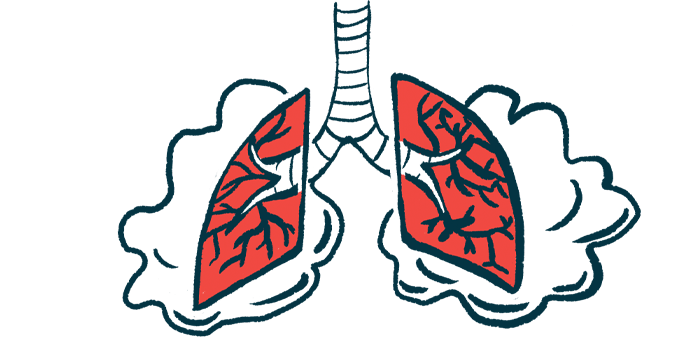Oxygen Uptake in Exercise Test Predicts PH-LHD Outcomes: Study

Maximum oxygen uptake measured during cardiopulmonary exercise testing (CPET) independently predicted long-term survival outcomes in people with pulmonary hypertension caused by left heart disease (PH-LHD), a study reported.
Further studies with a larger number of these patients are needed to confirm the findings, the researchers noted.
The study, “Peak oxygen uptake is a strong prognostic predictor for pulmonary hypertension due to left heart disease,” was published in BMC Cardiovascular Disorders.
PH is marked by high blood pressure in the pulmonary arteries, the blood vessels that supply the lungs. The disease is classified into different groups based on the underlying cause and symptoms.
Group 2, the most common type of PH, includes hypertension caused by diseases affecting the left side of the heart. Here, high blood pressure in the pulmonary arteries occurs when the left side of the heart cannot efficiently pump blood away from the lungs. Because the problem occurs after the blood has passed through the lungs, it is referred to as isolated postcapillary PH (Ipc-PH).
CPET measures heart and lung function during exercise and has been used to determine PH stage and severity. It’s not widely used in clinical practice in patients with PH-LHD, however.
Investigators at the Tongji University School of Medicine, China examined whether CPET data could predict the long-term survival of PH-LDH patients.
“To our knowledge, there are few studies to explore the prognostic [outcome] values of CPET for the mortality of patients with PH-LHD,” the research team wrote.
The study enrolled 89 participants with an average age of 64 years, most of whom were female (60.7%). Among these, 43 had Ipc-PH, while the remaining 46 had combined post- and pre-capillary PH (Cpc-PH), which occurs when people with PH-LHD also have heightened blood pressure caused by the pulmonary arteries that lead to the lungs (pre-capillary) narrowing.
Compared to those who survived beyond three years, all but one of the non-survivors were in higher World Health Organization functional class (WHO FC), meaning they were more severely limited,.
Non-survivors also walked a significantly shorter distance in six minutes (mean 280 vs. 410 meters), had elevated NT-pro-BNP, a blood marker for heart failure, worse kidney function, and higher pulmonary vascular resistance (PVR) — the resistance to blood flow within the pulmonary arteries.
CPET was performed using a cycle ergometer, starting with three minutes of rest, followed by three minutes of pedaling at 60 revolutions per minute, then increasing the workload to maximum tolerance, and finally five minutes of recovery.
From measurements collected during CPET, non-survivors had a significantly worse workload, lower exercise time, and reduced maximum oxygen intake or VO2. There was also a trend toward a lower oxygen uptake efficiency slope (OUES), a marker of heart-lung function.
Comparing individual measures, significant predictors of mortality included increased age, less distance walked in six minutes, shorter exercise time, lower maximum VO2 per kg of body weight, worse OUES, and low VE/VCO2 — a measure of breathing efficiency.
After adjusting for each of the individual measures, maximum VO2/kg was a significant independent predictor of all-cause mortality.
Across all PH-LHD patients, those with a maximum VO2/kg value of 10.7 milliliters per kg per minute (mL/kg/min) or more had a much better outcome than those with a maximum VO2/kg below this value. This maximum VO2/kg cut-off value predicted non-survival, or mortality, with an accuracy of 76.4% and survival at 82.4%.
Correlation analysis showed a low maximum VO2/kg was related to a shorter distance walked in six minutes and higher levels of NT-proBNP in the bloodstream.
Cpc-PH patients showed a worse survival rate compared to Ipc-PH patients. In both Cpc-PH and Ipc-PH patients, a maximum VO2/kg value of 10.7 mL/kg/min or more remained a good predictor of a better outcome.
“The peak VO2/kg is independently associated with all-cause death in patients with PH-LHD,” the investigators concluded. “The peak VO2/kg can also be analyzed together with Cpc-PH/Ipc-PH to better indicate the prognosis of patients with PH-LHD.”








